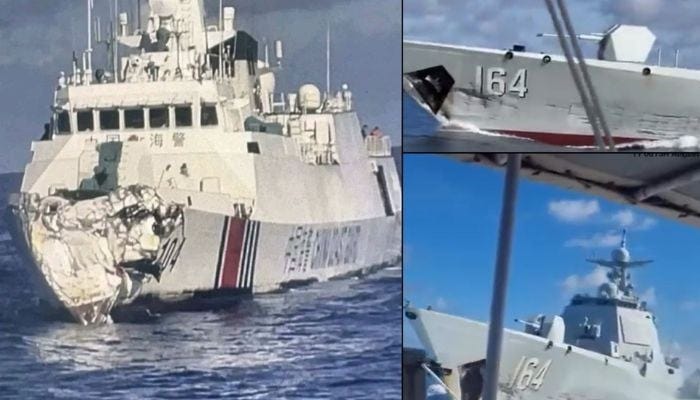China’s Military Power Part I: Image vs. Reality
How the PLA’s Image of Power Masks Deep Structural Flaws
Last week, a China Coast Guard cutter collided with a People’s Liberation Army Navy (PLAN) vessel during a confrontation off the Philippine coast. It wasn’t an accident of navigation but the result of aggressive, unprofessional maneuvering — the kind of chest-thumping that Beijing now deploys as routine statecraft in disputed territories. Reports show the vessel sustained serious damage and it remains unclear whether any China coast guard personnel were killed or injured in the collision. Reports indicate that the PLAN vessel continued in its pursuit of the Philippine vessel after the collision rather than aid in the rescue of its Coast Guard counterpart.
The incident captured something important: the gap between image and reality in China’s military posture. On paper, the PLA looks formidable, with the world’s largest navy in terms of vessel count and personnel, fields of J-20 stealth fighters, and hypersonic missiles on parade. The numbers impress and intimidate. The technical threat is real: Chinese hypersonic missiles can strike U.S. military installations as far off as Guam. Moreover, as we explored in a recent series, Chinese integrated air systems can outperform more technically advanced but less integrated counterparts.
But military power does not rest on platforms alone. It depends on people — their training, discipline, and ability to fight together under stress. By those metrics, the PLA likely falls short in myriad ways. It’s time to reassess China’s military capabilities not by just in terms of hardware, but by what would happen under real-world conditions. That is where strength is measured — and where China’s weakness is most exposed.




